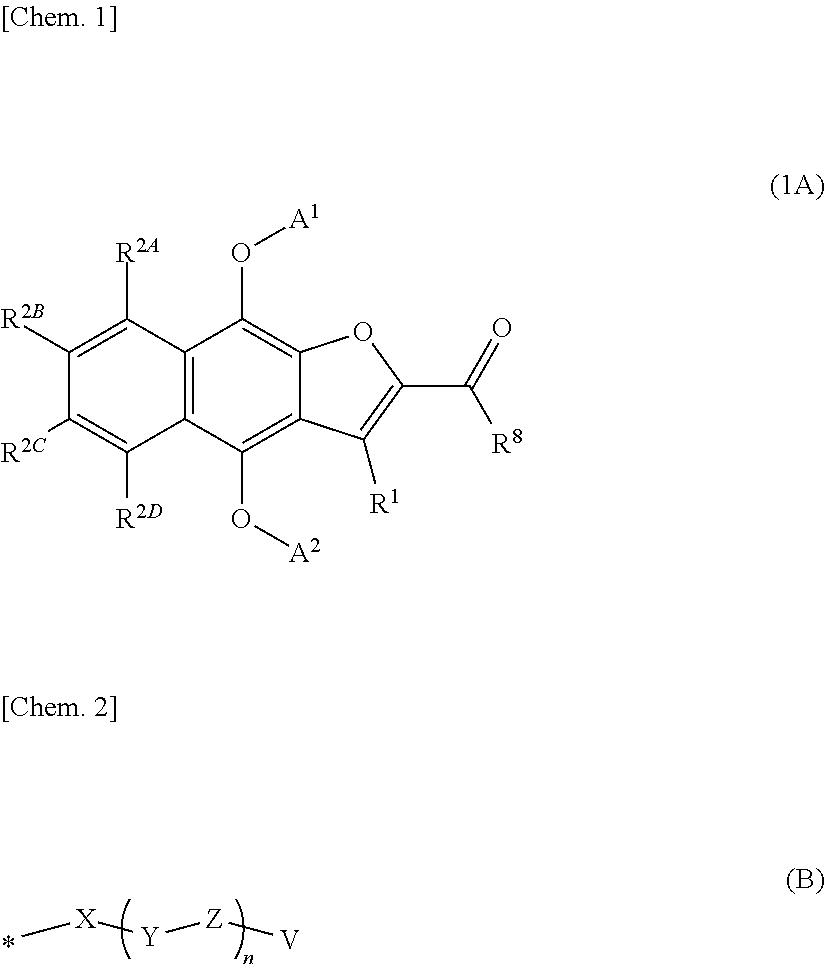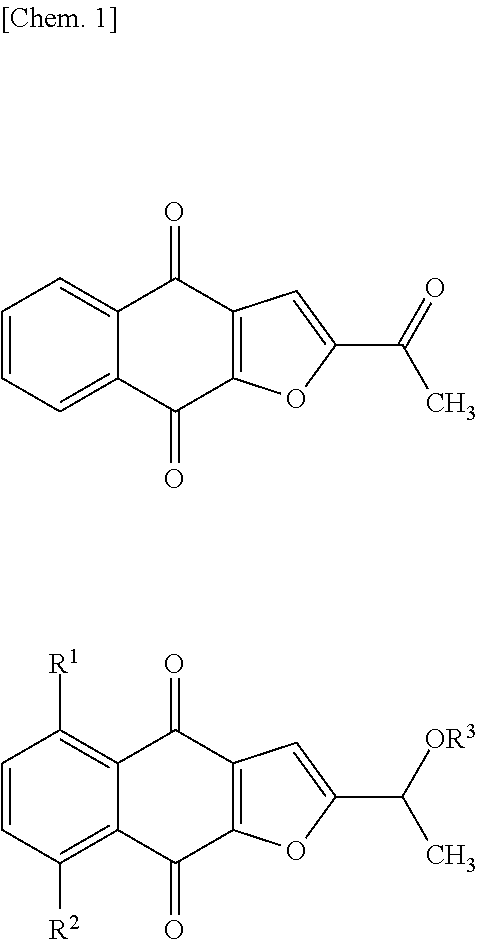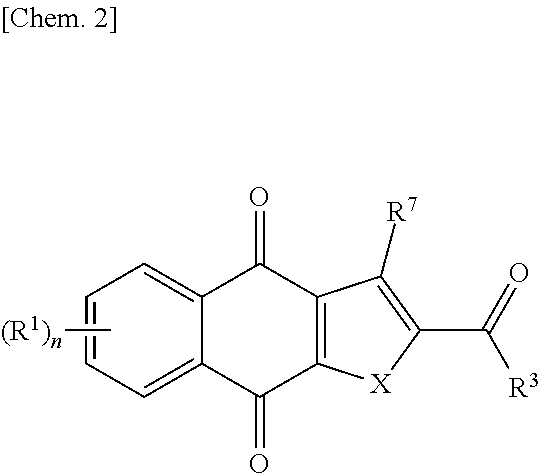Water-soluble prodrugs
a water-soluble, prodrug technology, applied in the field of new drugs, can solve the problems of interspecies difference, individual difference, interspecies difference, etc., and achieve the effect of high water-solubility
- Summary
- Abstract
- Description
- Claims
- Application Information
AI Technical Summary
Benefits of technology
Problems solved by technology
Method used
Image
Examples
reference example 1
tert-Butyl (3-isocyanatopropyl)carbamate
[0923]
[0924]Diisopropylethylamine (4.35 mL) and diphenylphosphoryl azide (4.71 mL) were added to a solution of 4-((tert-butoxycarbonyl)amino)butanoic acid (4.23 g) in toluene (41.6 mL). The reaction mixture was then stirred at room temperature for 15 minutes. After further stirring at 80° C. for 1 hour, the reaction solution was cooled to room temperature to yield a solution of Reference example 1 in toluene. The resulting solution was used in the next reaction as it was.
example 1a
2-Acetylnaphtho[2,3-b]furan-4,9-diylbis((3-((tert-butoxycarbonyl)amino)propyl)carbamate)
[0925]
[0926]A suspension of 2-acetylnaphtho[2,3-b]furan-4,9-dione (1.00 g), zinc (1.09 g), sodium dithionite (3.62 g), diisopropylethylamine (7.25 mL), tetra-n-butylammonium bromide (134 mg) in N,N-dimethylformamide (59.5 mL) was stirred under nitrogen atmosphere at room temperature for 1 hour. Then, the suspension was cooled to 0° C., and the solution of tert-butyl (3-isocyanatopropyl)carbamate in toluene, which was prepared in Reference example 1, was added dropwise thereto over 15 minutes. After further stirring at room temperature for 1 hour, ethyl acetate and aqueous saturated ammonium chloride solution were added to the reaction solution. After the resulting mixture was filtered through Celite, the filtrate was distributed between an organic layer and an aqueous layer. The aqueous layer was then extracted with ethyl acetate twice. The resulting organic layer was washed with water once and d...
example 1
2-Acetylnaphtho[2,3-b]furan-4,9-diylbis((3-aminopropyl)carbamate)dihydrochloride
[0928]
[0929]A 4 mol / L hydrochloric acid / dioxane solution (20.0 mL) was added to Example 1A (733 mg). The reaction mixture was then stirred at 50° C. for 1 hour. The reaction solution was concentrated, and then the residue was washed with diethyl ether to yield Example 1 (568 mg).
[0930]1H-NMR (400 MHz, DMSO-d6) δ: 1.80-1.91 (4H, m), 2.63 (3H, s), 2.86-2.95 (4H, m), 3.21-3.29 (4H, m), 7.60-7.70 (2H, m), 7.87-7.99 (6h, m), 7.99-8.07 (2H, m), 8.07 (1H, s), 8.44-8.50 (2H, m).
[0931](LC-MS: [M+2H]2+ / Rt (min))=222 / 0.36
PUM
| Property | Measurement | Unit |
|---|---|---|
| reaction time | aaaaa | aaaaa |
| reaction time | aaaaa | aaaaa |
| temperature | aaaaa | aaaaa |
Abstract
Description
Claims
Application Information
 Login to View More
Login to View More - R&D
- Intellectual Property
- Life Sciences
- Materials
- Tech Scout
- Unparalleled Data Quality
- Higher Quality Content
- 60% Fewer Hallucinations
Browse by: Latest US Patents, China's latest patents, Technical Efficacy Thesaurus, Application Domain, Technology Topic, Popular Technical Reports.
© 2025 PatSnap. All rights reserved.Legal|Privacy policy|Modern Slavery Act Transparency Statement|Sitemap|About US| Contact US: help@patsnap.com



